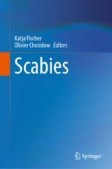Search
Search Results
-
Bacterial DnaK reduces the activity of anti-cancer drugs cisplatin and 5FU
BackgroundChemotherapy is a primary treatment for cancer, but its efficacy is often limited by cancer-associated bacteria (CAB) that impair tumor...

-
Anti-diarrheal drug loperamide induces dysbiosis in zebrafish microbiota via bacterial inhibition
BackgroundPerturbations of animal-associated microbiomes from chemical stress can affect host physiology and health. While dysbiosis induced by...

-
Design, synthesis and anti-TB and anti-bacterial activity of Ciprofloxacin derivatives containing N-(amino)piperazine moieties
Quinolones and rifamycins represent two classes of the most potent antibiotic against bacterial infections. In this study, the N -(amino)piperazine...

-
LL37 Microspheres Loaded on Activated Carbon-chitosan Hydrogel: Anti-bacterial and Anti-toxin Wound Dressing for Chronic Wound Infections
Antimicrobial peptide LL37 is a promising antibacterial candidate due to its potent antimicrobial activity with no known bacterial resistance....

-
Wound healing and anti-inflammatory effects of bacterial cellulose coated with Pistacia atlantica fruit oil
BackgroundBiological activities of Pistacia atlantica have been investigated for few decades. The fruit oil of the plant has been used for treatment...

-
IPSE, a urogenital parasite-derived immunomodulatory molecule, suppresses bladder pathogenesis and anti-microbial peptide gene expression in bacterial urinary tract infection
BackgroundParasitic infections can increase susceptibility to bacterial co-infections. This may be true for urogenital schistosomiasis and bacterial...

-
Anti-bacterial antibodies in multiple myeloma patients at disease presentation, in response to therapy and in remission: implications for patient management
Multiple myeloma (MM) is associated with increased risk of infection, but little is known regarding antibody levels against specific bacteria. We...

-
Antimicrobial Peptides and Antibacterial Antibodies for the Elimination of ESKAPE Pathogens
ESKAPE pathogens, responsible for hospital-acquired infections, pose a global threat due to their multi-drug resistance attained by excessive and...
-
Management of Common Scabies
The management of common scabies infestation has pharmacologic and non-pharmacologic elements. Pharmacologic intervention consists of anti-parasitic...
-
Exploring the influence of the microbiome on the pharmacology of anti-asthmatic drugs
The microbiome is increasingly implicated in playing a role in physiology and pharmacology; in this review, we investigate the literature on the...

-
Defense and anti-defense mechanisms of bacteria and bacteriophages
In the post-antibiotic era, the overuse of antimicrobials has led to a massive increase in antimicrobial resistance, leaving medical doctors few or...
-
Medulla Tetrapanacis water extract alleviates inflammation and infection by regulating macrophage polarization through MAPK signaling pathway
Medulla Tetrapanacis (MT) is a commonly used herb to promote lactation and manage mastitis in lactating mothers. However, its anti-inflammatory and...

-
Epilepsy and Gut Microbiota
Epilepsy is a debilitating chronic disease that affects nearly 70 million people worldwide. Anti-seizure medications or anticonvulsants have been...
-
Semi-synthesis of novel thebaine derivatives with low cytotoxicity and their antibacterial and antihemolytic properties
In the present study, some new 1,2,3-triazole-tethered analogs of N -northebaine were designed and synthesized. The anti-bacterial properties of novel...

-
Anti-virulence to Counter the AMR Conundrum: Principles and Strategies
Antibiotic resistance for a large diversity of clinically significant pathogens has been observed with increasing frequency over the past several...
-
Anti-virulence to Counter the AMR Conundrum: Principles and Strategies
Antibiotic resistance for a large diversity of clinically significant pathogens has been observed with increasing frequency over the past several...
-
Targeting Host and Bacterial Signaling Pathways in Tuberculosis: An Effective Strategy for the Development of Novel Anti-tubercular Therapies
Tuberculosis (TB) is a pandemic disease caused by an obligate intracellular pathogen Mycobacterium tuberculosis (M.tb). The current TB therapy,...
-
Microbiota perturbation by anti-microbiota vaccine reduces the colonization of Borrelia afzelii in Ixodes ricinus
BackgroundTicks can transmit a broad variety of pathogens of medical importance, including Borrelia afzelii , the causative agent of Lyme borreliosis...

-
Non-clinical safety assessment of Annona atemoya leaf extract: evaluation of genotoxicity
The leaves, stems, and fruits of Annona atemoya ( A. atemoya ; AA), a fruit-bearing plant of the family Annonaceae, exhibit anti-angiogenic,...

-
Recent advances in triazole-benzenesulfonamide hybrids and their biological activities
Hybridization is the process of fusion of two or more existing moieties to make a single molecule. Triazoles and benzenesulfonamides are the useful...

